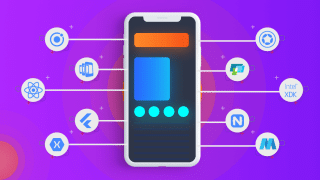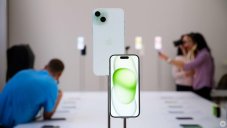Apple Is Slowing Down Its iPhone Launch Cycle To Match Changing Demand
Dhir Acharya - Aug 06, 2019

In 2015, Apple reached the peak of its iPhone sales while slowing down in launching significant changes in design every two years.
- Apple iPhone 15 Launch Date in India, Price, Specifications & More
- How to get a Bangladesh virtual phone number?
- Apple Kills Original HomePod, Focusing On HomePod Mini
With the upcoming iPhone 11, Apple is bringing several changes to improve its long-standing features, such as two-way wireless charging, a faster chip, and three rear cameras.
However, those features may not be able to compare with the 2020 iPhone’s new features: a 3D camera, high-end OLED display, 5G compatibility, and new screen sizes. It’s possible that the company will switch from the Lightning connector to USB-C, which it’s already used for the iPad Pro and MacBook.

The new exciting features we have listed above may please consumers and it’s thanks to the change in their own habits in the maturing phone market. In 2015, Apple reached the peak of its iPhone sales while slowing down in launching significant changes in design every two years.
Now, people are buying new phones slower and there are fewer upgrades each year, the trend is indicated in how Apple has shifted its iPhone releases cycles.
Before 2015

Before 2015, for one year that Apple released a significant redesign for its phones, the next year it would launch a smaller, internals-focused offering.
- Back in 2007, the company launched the original iPhone, beginning a product line that features the back case made from metal and plastic.
- Then in 2008, it released the iPhone 3G featuring a new design with a plastic back. In 2009, Apple rolled out the iPhone 3GS with the same look but housed a faster chip and video recording.
- In 2010, Apple switched to a glass and stainless design. While Steve Jobs compared that with a Leica camera, the design was infamous for the “antennagate” problems. In 2011, the company fixed this issue with the iPhone 4S, along with a faster chip, but the design remained the same.
- In 2012, the iPhone 5 marked the first change in screen size, from 3.5 to 4 inches, with a thinner body and elongated shape. In 2013, Apple launched an iPhone 5 with a similar design, but the home button was replaced with a fingerprint reader.
Since 2014

The Cupertino-based company, since 2014, has shifted to a slower cycle.
- In 2014, by launching the iPhone 6, Apple introduced screen sizes of 4.8 and 5.5 inches with a curved design.
- In 2015, the iPhone 6S was launched whose most important improvement was the force-sensitive display while the design stayed the same.
- In 2016, the iPhone 7 came out with new color options, along with waterproof ability as well as the dual-lens camera.
- In 2017, Apple released the iPhone X carrying a huge change in design. The fingerprint sensor and home button disappeared in exchange for the notch. This phone marked the first time we see an iPhone without the home button. Then, launched in 2018, the iPhone XS looked exactly like the iPhone X, but the XS Max and XR brought new screen sizes.
Why the trend?

There are a number of factors causing the company to slow its cycle. For one, smartphones are already decent. In recent years, there have been few upgrades each year. A new triple-camera setup is great, but how much of a difference does it bring to users?
In a 2017 study from Kantar, it was found that in 2013, US consumers held onto their smartphone for 20.5 months before getting a new one. However, by 2016, the period increased to 22.7 months, almost two years. The same trend appeared in China as well as five countries in Europe.
After selling as many as 231 million phones in 2015, Apple’s unit sales have fallen to 215 million. Hence, the company has switched its focus from hardware to services such as Apple TV+ and Apple Arcade, which do not require upgrades regularly.
Last week, the tech firm released its latest quarterly report, which said iPhone sale dropped to under 50 percent of Apple’s total revenue for the first time since 2012.
Featured Stories

Mobile - Dec 04, 2023
Most Widely-Used Cross-Platform Mobile App Development Frameworks

Mobile - Sep 28, 2023
Why iPhone 15 Costs A Lot Even Though It's Made in India?

Mobile - Aug 15, 2023
4 Ways AI Could Change The Mobile Gaming Industry

Mobile - Aug 09, 2023
Apple iPhone 15 Launch Date in India, Price, Specifications & More

Mobile - Jul 28, 2023
Best Gaming Smartphones In 2023 Game Enthusiasts Should Know

Mobile - Jul 28, 2023
Which Smartphone Has The Best Camera 2023?

Mobile - Jul 12, 2023
Samsung Galaxy F54 5G Price in India (July 2023)

Review - Oct 18, 2022
Online Gambling in India is Flourishing

Mobile - Sep 27, 2022
Three Reasons Why the Gaming Community is Focusing more on Playing Mobile Games

Mobile - Sep 22, 2022
Comments
Sort by Newest | Popular